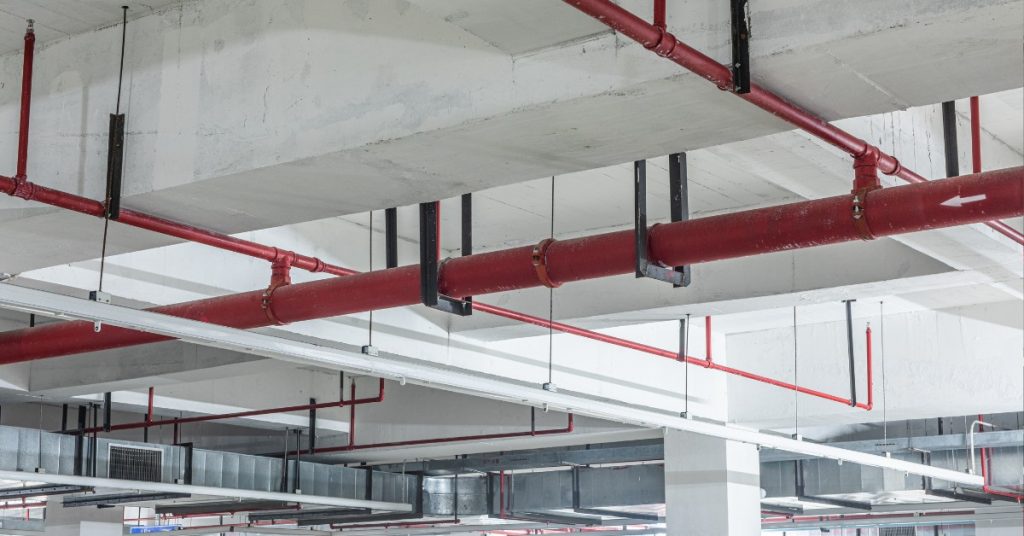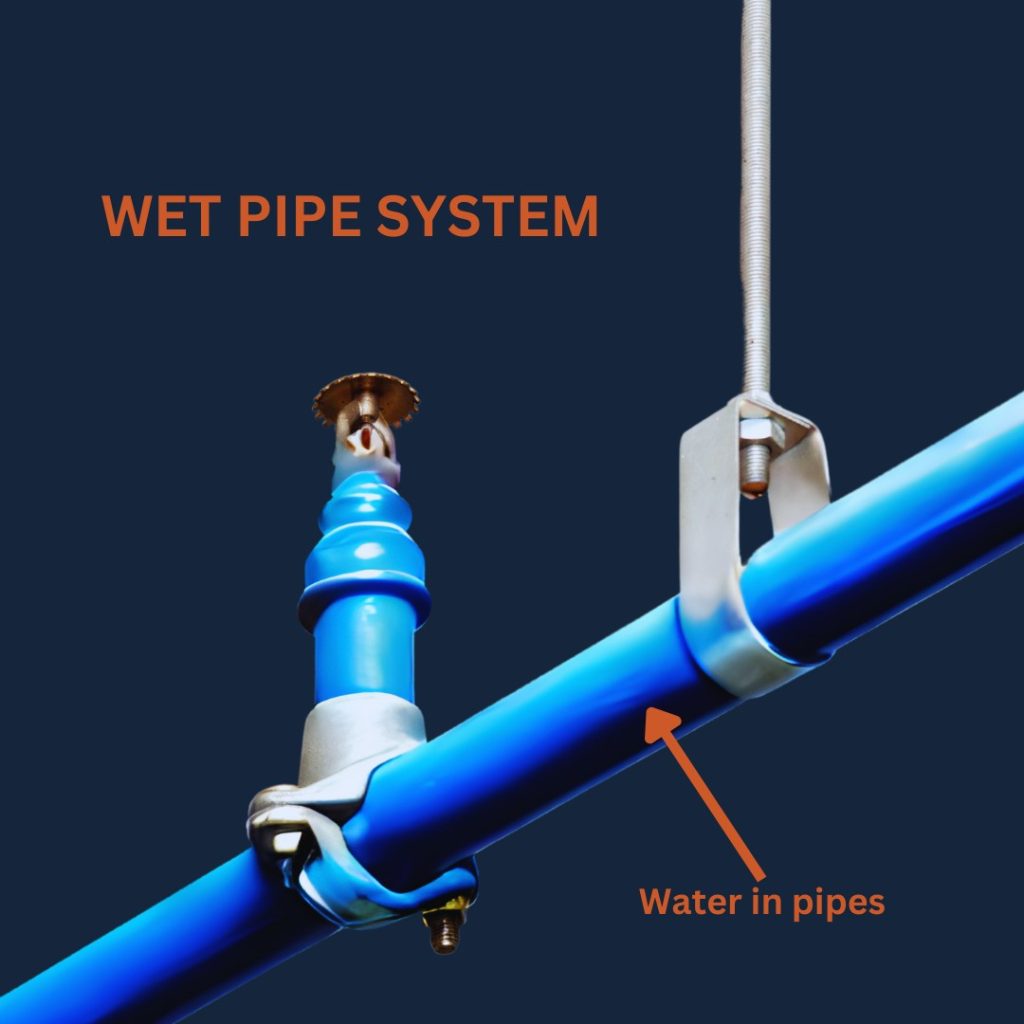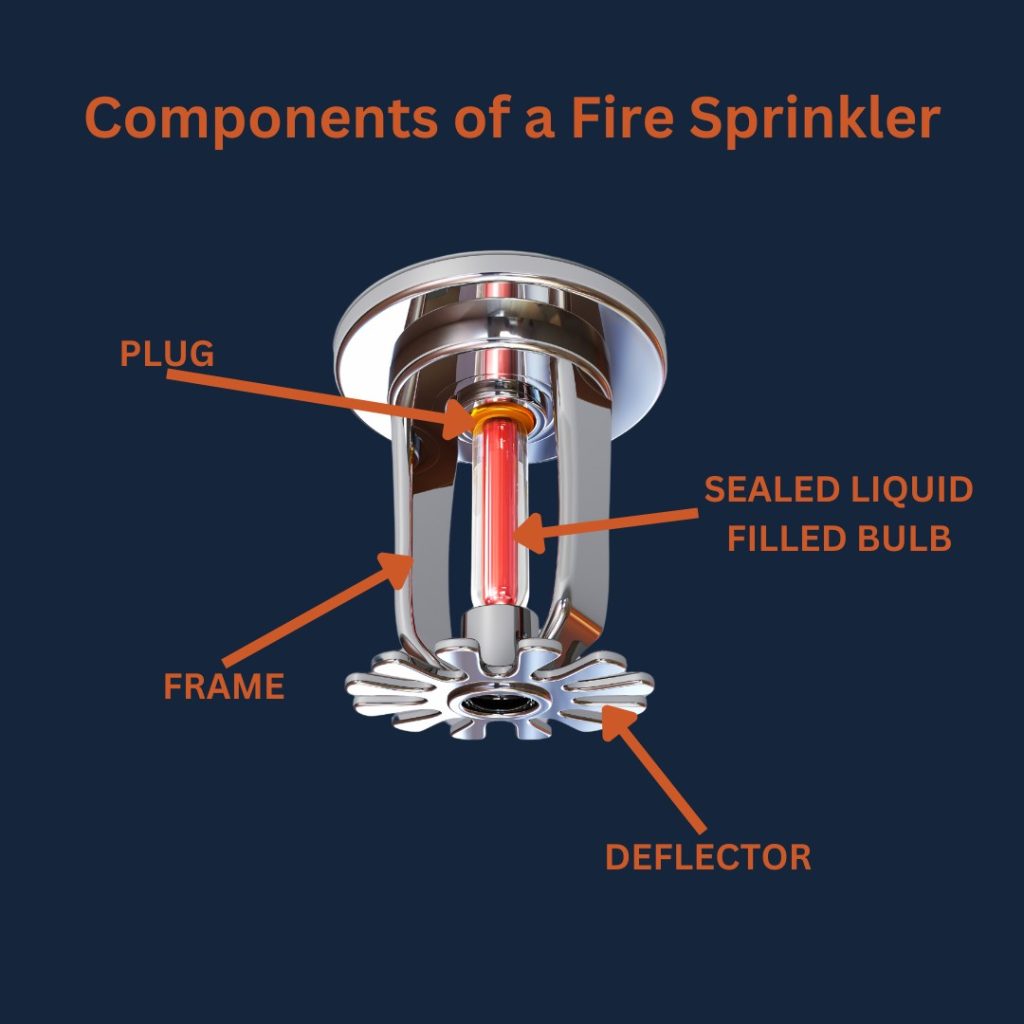
Understanding Your Fire Suppression System
Fire Suppression systems are crucial components of fire safety, designed to detect and extinguish fires, thereby protecting lives and property. Understanding the different types of fire suppression systems–wet pipe, dry pipe, deluge, and pre-action systems–is essential because each is tailored to specific environments and risks.
Knowing which type you have helps you comprehend the potential causes of accidental discharges, as well as the specific maintenance and precautionary measures required. This knowledge ensures you can respond appropriately in the event of an activation, minimizing fire/smoke/soot damage, water damage and ensuring safety.
Wet pipe systems
- Wet pipe systems are the most common. These systems are only installed in frost-resistant areas and are filled with water under pressure.
- When the sprinkler head is exposed for a sufficient time to a temperature at or above the temperature rating, the heat element breaks, allowing the pressurized water to flow through the sprinkler.

Dry pipe systems
- Dry pipe systems are installed in areas where the temperature may be cold enough to freeze the water in a wet pipe system. These systems are filled with pressurized air with an alarm valve to separate the sprinkler pipe from the water supply pipe.
- When the sprinkler head is exposed to a temperature at or above the temperature rating, it opens, allowing the pressurized air to escape and triggers the alarm valve for the water to enter the sprinkler pipes.

Deluge systems
- Deluge systems are where all sprinklers connected are open. These systems do not have a sensing element like a glass bulb.
- The piping is filled with atmospheric pressure with a deluge valve that opens in case of a fire.
- A signal from a fire alarm system activates the deluge valve.
Pre-action systems
- Pre-action systems are specialized to be used in locations where accidental activation is undesired like technology companies or data centers.
Fire alarm sensors
- Fire alarm sensors consist of smoke and/or heat detectors which activates the alarm system.


Common Causes of Fire Suppression System Discharges
Understanding why your fire suppression system might discharge inadvertently can help prevent future occurrences and prepare you for immediate action. Common causes include:
- Aging Parts: Over time, components can degrade, leading to accidental discharges.
- Building Renovations: Construction activities can disturb sprinkler systems.
- Incorrect Heating System Placement: Heating systems placed too close to sprinklers can trigger them.
- Freezing Temperatures: Vulnerable pipes can freeze and burst.
- Corrosion: Corroded components may fail and cause leaks.
- Human Error: Sprinkler heads could be activated by activities being conducted around them.
- Activation: The system responded properly to minimize the damages of a fire.
Preventing Accidental Discharges
To minimize the risk of accidental discharges:
- Regular Maintenance: Schedule routine inspections and maintenance of your fire suppression system.
- Proper Installation: Ensure that heating systems and other equipment are properly placed to avoid triggering sprinklers.
- Environment Control: In cold climates, insulate pipes to prevent freezing.
- Avoid Human Error: Install protective cages around sprinklers and other exposed components of fire suppression systems in high-risk or heavy traffic areas to protect them from impact damage that could trigger the system.